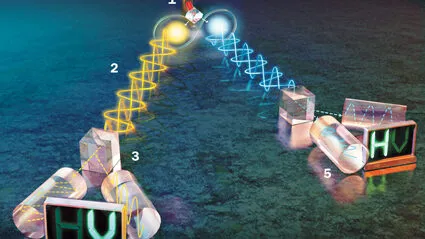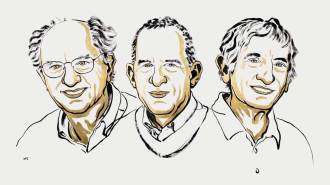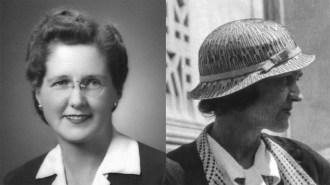Like fate of cat, quantum debate is still unresolved
- More than 2 years ago
In the tapestry of 20th century physics, virtually every major thread is entangled with the name of Albert Einstein. He was most famous for the theory of relativity, of course, which rewrote Newton’s laws and set modern theoretical cosmology in motion. But Einstein also played a major role in the origins of quantum theory and in perceiving its weird implications — including entanglement, a mystery named by Erwin Schrödinger in a paper based on an experiment imagined by Einstein.
Entanglement is now one of the hottest research fields in physics. It is pursued not only for insights into the nature of reality, but also for developing new technologies, as Laura Sanders notes in a special section marking the 75th anniversary of Einstein’s entanglement paper (and another quantum legend, Schrödinger’s half-dead, half-alive cat).
Despite his contributions to quantum theory, Einstein didn’t like it. He believed that its weirdness indicated an incomplete theory that accounted for observed phenomena but was silent on invisible elements of reality that produced the weirdness. As I describe in this issue, Einstein clashed with Niels Bohr, who found it meaningless to ascribe reality to anything unobservable. Bohr outdebated Einstein, but adherents to Einstein’s views remain vocal today.
Today’s debate sometimes gets acrimonious. It was not that way with Einstein and Bohr – their disagreement did not erode their deep mutual respect. Their conflicting ideas simply reflected differences in their worldviews, shaped by their personalities and scientific backgrounds. Einstein valued simplicity and clarity; Bohr embraced ambiguity. Einstein was a loner, working for the most part in isolation; Bohr surrounded himself with the brightest physicists of the day at his Copenhagen institute. Einstein’s initial scientific success came from finding unities in phenomena – matter’s identity with energy, for instance. Bohr explained the atom by emphasizing the incompatibility of classical and quantum physics.
For Bohr, quantum mysteries such as the dual wave-and-particle nature of light reflected the richness of a complicated universe. Einstein wanted a simpler, unified theory from which complexity would emerge logically, sans weirdness. Physicists have pursued Einstein’s goal within a quantum framework, without much success. It’s unclear whether future progress will come from avoiding quantum weirdness, or by making it even weirder.
Clash of the quantum titans
By Tom Siegfried
After decades of debate, disputes over the mathematical rules governing reality remain unresolved.
A spooky link
By Science News Staff
Albert Einstein coined the phrase “spooky action at a distance” to describe this counterintuitive phenomenon.
Quantum weirdness
By Tom Siegfried and Laura Sanders
Some key concepts in quantum mechanics lead to rather startling results.
75 years of entanglement
By Alexandra Witze
Though it has been confirmed numerous times since 1935, entanglement is as spooky as ever.
Past SN Quantum coverage
View Science News quantum coverage from 1928 to present in PDF format.
Read features from the special edition in PDF form here.












